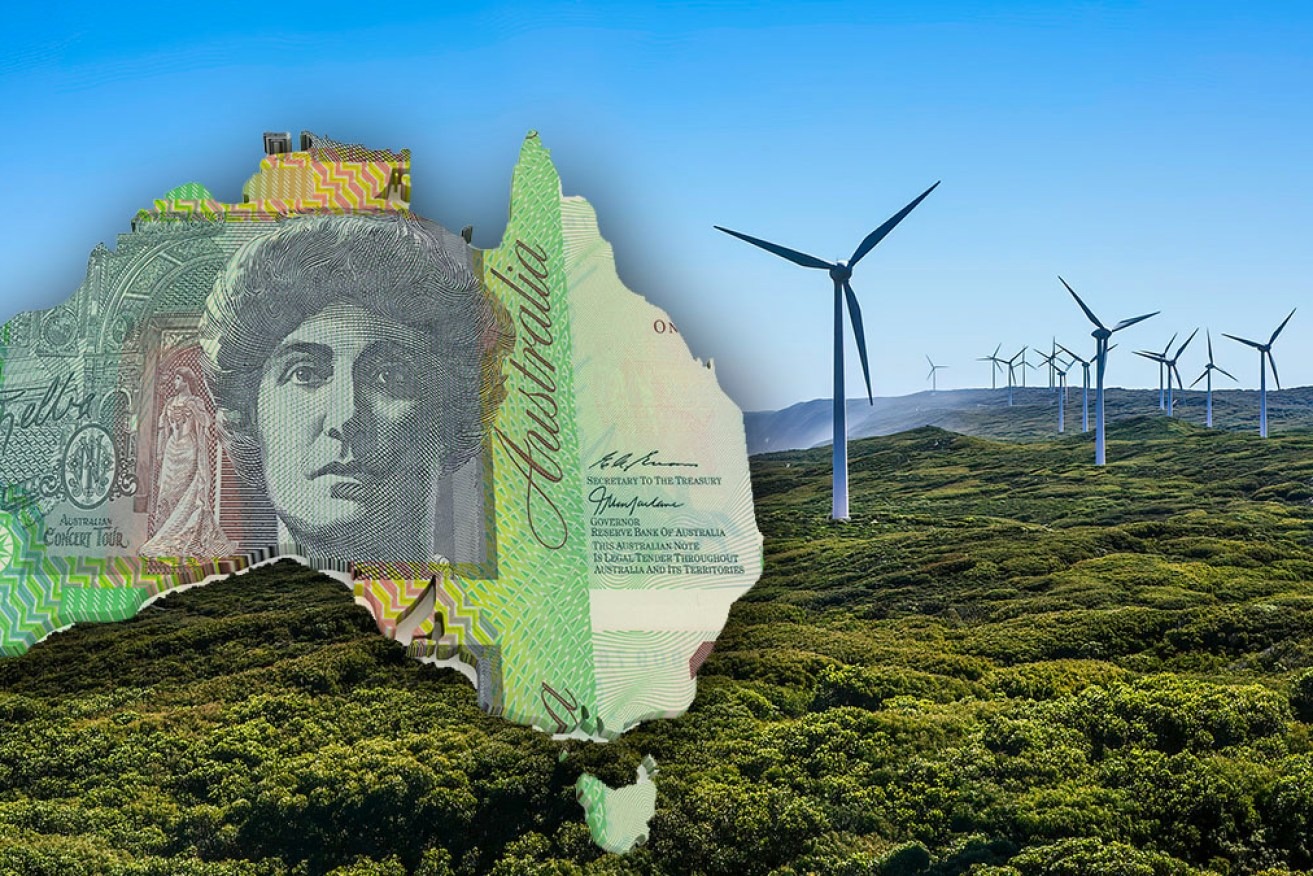Massive super growth will help fund green energy revolution
Not only will super balances triple over the next 39 years, but the not-for-profit industry sector will dominate.

Growing super balances will drive the green energy revolution. Photo: TND
Superannuation is growing so dramatically that the current $3.7 trillion Australians hold in their retirement accounts is expected to reach $11.2 trillion by 2043.
And that growth will create a growing pool of capital available to fund the staggeringly high bill being racked up by the move towards a net zero economy, says senior economist Saul Eslake.
That growth will push the value of superannuation assets from current levels of 125 per cent of GDP to around 180 per cent and deliver significant new investment firepower to the local economy, according to Deloitte’s latest Dynamics of the Superannuation System report.
Not only will super balances triple over the next 39 years, but the not-for-profit industry sector will dominate.
Currently, industry funds account for 44 per cent of overall super balances while retail funds have 23 per cent and self-managed super funds 27 per cent. By 2043 self-managed super funds (SMSFs) are expected to decline to 22 per cent while retail funds will stay steady and public sector funds, now 6 per cent of the market, will decline to 3 per cent.
Given the fact that industry funds have about 20 per cent of their investments in Australian shares compared to about 28 per cent for retail funds and 39 per cent of SMSFs, there will be relatively more capital in the markets available for non-share market investments.
“Perhaps past asset allocations are not necessarily indicative on how industry funds will invest in the future. But industry funds have been big investors in infrastructure assets,” independent economist Saul Eslake said.
“While the target of super fund infrastructure investments may change “there will have to be globally an enormous amount of investment in the zero carbon economy.”
Research group Net Zero Australia has said net zero energy infrastructure will likely cost Australia $1.5 trillion by the end of the decade and $7 to $9 trillion by 2060. For that to happen, the super system will have to supply big licks of capital.
“Super funds have been very active in that space and almost certainly they’ll be allocating more to that over the next 30 years,” Eslake said.
This rapid growth in superannuation assets will deliver significant benefits to Australian retirees, not just the economy as a whole. Research produced by Mandala and the ATO shows that the median superannuation balance of those aged 65 or more stands at $102,400.
However, because of the maturing of the super system and the move of the super guarantee paid by employers to 12 per cent of salaries by mid next year, working Australians aged between 35 and 44 are likely to retire with a median balance of $474,000, Mandala’s research found.
“The next few decades will see millions of Australians retiring and using their substantial super balances to help fund a dignified retirement,” said Amit Singh, managing partner at economic consultancy Mandala.
With such significant balances coming down the pipeline, Australians need to consider how they can best manage their retirement finances. Singh says that currently 49 per cent of people aged 65 years or over continue to hold their super in accumulation accounts that are taxed at a rate of up to 15 per cent.
Accumulation is costly
“Australians that continue to hold an accumulation phase account are subjected to earnings tax and that costs the average Australian around $1,900 a year,” Singh said.
Were these funds moved into pension mode with a balanced allocation, that tax would be avoided delivering significant retirement benefits over time.
Withdrawing super as a lump sum rather than investing in a balanced pension option could result in “missing out on up to $3,800 of additional earnings in a year,” Singh said.
While 49 per cent of those 65 and over hold their money in accumulation funds, this only accounts for 35 per cent of superannuation balances in that age group. That implies that those with higher balances are aware of the tax losses in accumulation funds and move into retirement products otherwise known as allocated pensions.
Ensuring you are in a zero tax super allocation is a no brainer that all retirees should be thinking about.
While the growing industry fund movement is less focused on the share market than the retail and SMSF sectors, the growth in superannuation will increase the overall financial clout of the sector.
Currently, super funds own 36 per cent of the value of the ASX but by 2043 super funds will own 43 per cent of the share market.
This story first appeared in our sister publication The New Daily, which is owned by Industry Super Holdings.




